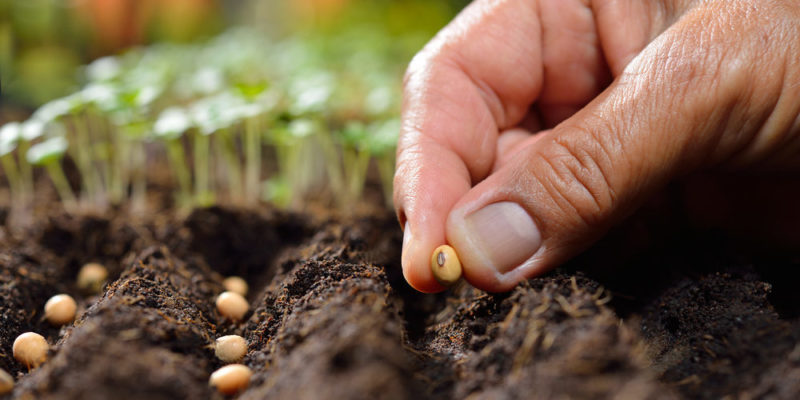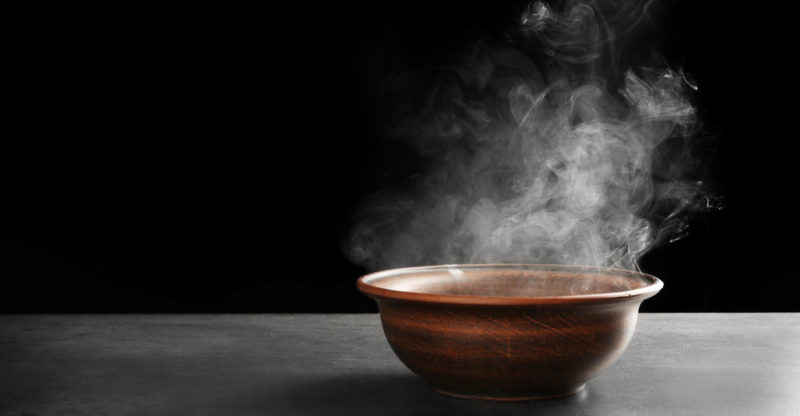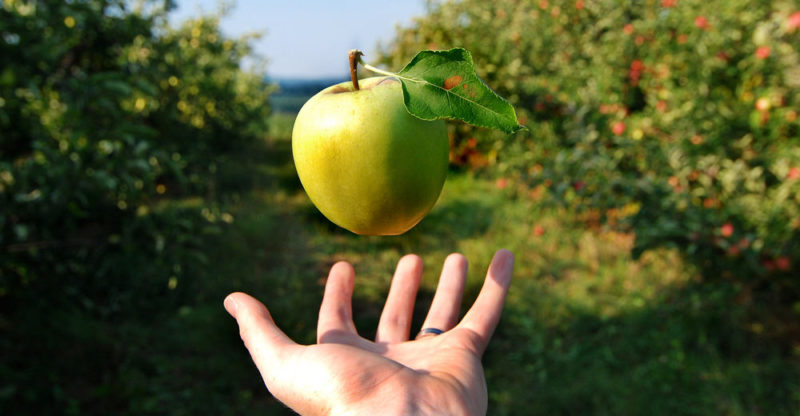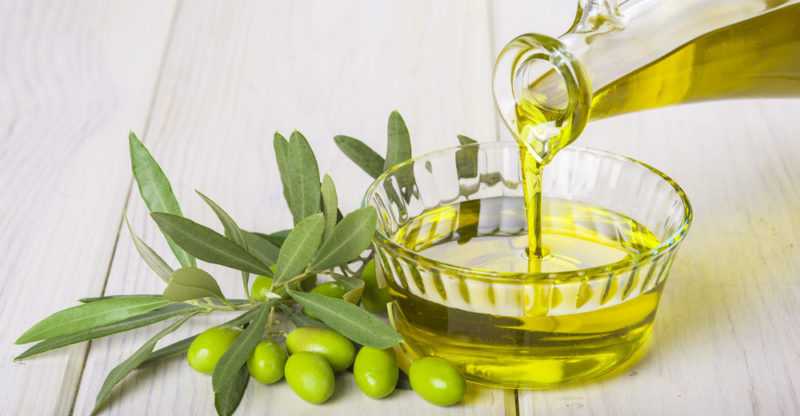We explain everything about matter, how it is classified and its composition. Also, what are its characteristics and levels of organization.
What is matter?
By matter various concepts are understood, essentially one physical and one philosophical. According to the physicist, matter is everything that occupies a place in the universe , has a certain amount of energy and is subject to interactions with measuring instruments and changes over time . Philosophically speaking, matter is each of the constituent elements of objective reality, which can be perceived in the same way by different subjects.
Types of matter
 Broadly speaking, we can list the main types of matter as follows:
Broadly speaking, we can list the main types of matter as follows:
- Living matter . It makes up the body of living beings .
- inanimate matter . It makes up inert, lifeless objects.
- organic matter . Consisting mainly of carbon and hydrogen atoms , linked with life
- inorganic matter . It is not organic, that is, it is in a free state in nature and does not necessarily have to do with living beings.
- Simple matter . Composed of one or a few types of atoms .
- Composite matter . It has numerous elements of various types in its composition and reaches higher levels of complexity.
Composition of matter
All matter, as far as we know, is made up of invisible particles , which make up the elemental matter of the 118 known chemical elements in the periodic table.These particles are called atoms and are different from each other depending on which element they belong to, but not in their shape or constitution but in the number or distribution of subatomic particles: electrons (negative charge), protons (positive charge) and neutrons (neutral charge). ).
In this way, a hydrogen atom is identical to every other hydrogen atom in the galaxy and they are all made up of one proton and one electron. In that they differ from an oxygen atom , which is made up of eight protons and eight electrons.
Properties of matter
 Matter has properties of a diverse nature that can be organized according to its perspective:
Matter has properties of a diverse nature that can be organized according to its perspective:
- Physical Properties . They depend on the substance and are manifested in its appearance, its smell and taste, its texture, its weight, its resistance, etc.
- Chemical Properties . They depend on the atomic configuration of the substance and are revealed in its reaction with other substances or compounds, or with various forms of energy such as electricity or magnetism.
- Physical-chemical properties . It is a perspective that reconciles the previous two.
- General properties . They are the properties shared by all matter, such as weight or mass.
- Specific properties . They are the unique properties of each type of matter, such as boiling point or density.
Main characteristics of the material
 The main characteristics of the material are:
The main characteristics of the material are:
- Mass . The mass of things is the sum of the total amount of matter in them. That is, how many elements are contained in the same body. It can also be seen as the resistance that a body opposes to the change of its movement. It is measured in kilograms according to the International System of Units (SI).
- Weight . It is the extent to which the force of gravity acts on one body or another, measured in Newtons (N) according to SI. It is often confused with dough, but it is something different.
- Volume . It is the ratio of the space defined in three dimensions (length, width and height) occupied by a given body, measured in cubic meters (m3) according to the SI.
- Density . It indicates how close together the particles of a body or substance are, calculated as the ratio of their mass to their volume. It is expressed, therefore, in kilograms per cubic meter (kg/m3).
- temperature . It is the measure of heat perceived in a given body, since heat energy is transmitted from warmer bodies to colder ones. For this, different temperature scales are used: Celsius (°C), Kelvin (°K) or Fahrenheit (°F).
Characteristics of solid matter
 Solid matter has its particles very close and fixed in stable relationships of attraction, which give them a defined shape, resistance to deformation and impossibility of flow. Solids also have the following exclusive properties:
Solid matter has its particles very close and fixed in stable relationships of attraction, which give them a defined shape, resistance to deformation and impossibility of flow. Solids also have the following exclusive properties:
- Hardness . It refers to its resistance to penetration by another solid. Hard objects cannot be cut as easily as soft objects.
- Malleability . It refers to materials that can be deformed by compression, without breaking or dividing into smaller parts. Malleable materials are good for forming sheets.
- Ductility . It refers to the possibility of forming threads of matter when it is subjected to traction forces .
- Melting point . It refers to the temperature at which a solid ceases to be a solid and becomes a liquid .
Characteristics of liquid matter
 The liquid material flows more or less easily, as their particles move quickly and are attracted less strongly than in solids, allowing keep them together and have the same intrinsic volume, but not a specific own way (but of your container). In addition, they have the following characteristics:
The liquid material flows more or less easily, as their particles move quickly and are attracted less strongly than in solids, allowing keep them together and have the same intrinsic volume, but not a specific own way (but of your container). In addition, they have the following characteristics:
- Compressibility . It is the ability of matter to be compressed or not, that is, if its atoms can be forced to be closer to each other. It is present in liquids and to a greater extent in gases , since solids are incompressible.
- Viscosity . Depending on how much resistance its particles offer to flow, the liquid will flow more or less easily. The higher the viscosity (like asbestos), the lower the fluidity.
- Freezing point . It is the temperature at which a liquid becomes a solid due to the decrease in heat energy of the liquid.
- boiling point . It is the temperature at which a liquid changes to a gas, when the vapor pressure of the liquid equals the pressure surrounding the liquid.
Characteristics of gaseous matter
Gases are the most dispersed, least cohesive and most volatile presentation of matter. They do not have a certain shape or volume, but tend to occupy all the available space. They are fluid and less affected by gravity. They have the following properties:
- Compressibility . They are much more compressible than liquids.
- pressure . They exert force on everything that contains them, so they "push" and press everything around them.
- Liquefaction . By applying large amounts of pressure, a gas can be forced to become a liquid.
- condensation . Similarly, by removing heat energy, a gas can be transformed into a liquid.
Characteristics of plasmatic matter
 Plasma is one of the least known states of aggregation of matter, although it is the most abundant in the universe . It is a fluid similar to gas, but whose particles are electrically charged. Like gases, it has no definite shape or volume. A perfect example of this state is fire .
Plasma is one of the least known states of aggregation of matter, although it is the most abundant in the universe . It is a fluid similar to gas, but whose particles are electrically charged. Like gases, it has no definite shape or volume. A perfect example of this state is fire .
Levels of organization of matter
 According to biology , matter is organized into various levels or planes of complexity, which are:
According to biology , matter is organized into various levels or planes of complexity, which are:
- subatomic level . The particles that make up the atom: electrons, protons, neutrons.
- Atomic level . The various atoms of the various chemical elements.
- Molecular level . Bonded atoms form larger chemical structures of varying complexity.
- Cellular level . The cell as the minimum unit of living matter, especially as unicellular organisms. The passage between the previous level and this one is still the subject of scientific speculation.
- tissue level . Cells are organized into tissues that reach higher levels of organization and specialization in multicellular beings.
- Organ level . Tissues are organs in the body increasingly complex multicellular beings.
- Level system . Organs operate jointly and reciprocally in the body, forming vital organ systems.
- Organism level . The set of organ systems and processes produce a living individual.
- Population level . Living organisms come together for protection and reproduction, forming populations .
- Ecosystem level . The various populations that share the same habitat have reciprocal relationships among themselves and with the environment in which they live, forming an ecosystem.
- Biome level . Diverse ecosystems share the same geographic region, subject to the same natural forces, they form a biome .
- Biosphere level . The totality of the planet's biomes make up the total perspective of life on Earth .
What is anti-matter?
Antimatter is a concept from quantum chemistry: matter made up of antiparticles , as opposed to ordinary matter, which is made up of particles.Particles can annihilate when they interact with antiparticles, releasing photons or gamma rays. It is a rare form of matter in the universe, which would have had its origin in the Big Bang . For example, the electron has a negative charge and its antiparticle, the positron, has a positive charge.
The above content published at Collaborative Research Group is for informational and educational purposes only and has been developed by referring to reliable sources and recommendations from technology experts. We do not have any contact with official entities nor do we intend to replace the information that they emit.
Veronica is a culture reporter at Collaborative Research Group, where she writes about food, fitness, weird stuff on the internet, and, well, just about anything else. She has also covered technology news and has a penchant for smartphone stories. .
Leave a reply
Your email address will not be published. Required fields are marked *Recent post

Sport: What Is It, Types, Risks, Features, Characteristics and Examples

Dogs: Emergence, Features, Characteristics, Feeding and Breeds

Story: Definition, Elements, Structure, Features and Characteristics

